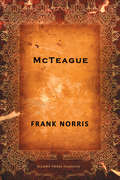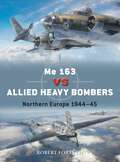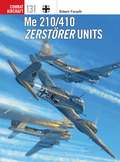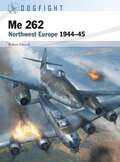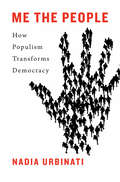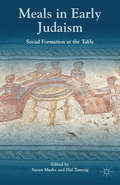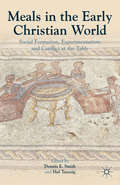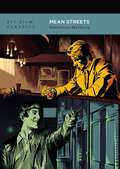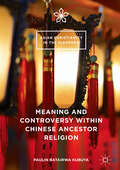- Table View
- List View
McMafia Brain Shot
by Misha GlennyIn this powerful account, Misha Glenny takes us on a journey through the new world of international organised crime. He has travelled throughout the world - from Japan to China to Brazil to the USA and has spoken to countless gangsters, policemen and victims of organised crime while also exploring the ferocious consumer demand for drugs, trafficked women, illegal labour and arms across five continents.McMafia Brain Shot focuses on cybercrime in Brazil and people trafficking from China to Brazil, the UK and Europe and unpicks the nexus of crime, politics and money worldwide which have become entangled and interdependent in entirely novel forms since the 1980s. It argues that conventional policing methods are no longer appropriate to deal with a problem whose roots lie in global poverty and the ever widening divisions between rich and poor.BRAIN SHOTS: The byte-sized account of international crime and globalisation's dark side
McMillions: The Absolutely True Story of How an Unlikely Pair of FBI Agents Brought Down the Most Supersized Fraud in Fast Food History
by James Lee Hernandez Brian LazarteIn this stranger than fiction story of the massive crime network that rigged the McDonald&’s monopoly game for decades, unlock new, exclusive interviews and stories that couldn't make it into the HBO docuseries, McMillion$. Perfect for readers of Argo, The Wizard of Lies, and Enron: The Smartest Guys in the Room. In March of 2001, Federal prosecutor Mark Devereaux cold-called Rob Holm, the head of security for McDonald's Corporation. Without explanation, Devereaux asked that Holm and several other McDonald's senior executives plan a visit to the Jacksonville, Florida, FBI, and tell no one about their intended destination. It wasn't up for discussion. Upon their arrival, Devereaux watched them closely, looking at body language, checking for tells. To him, they were all potential suspects. Once they were seated in an unremarkable conference room, sealed away in the hyper-secure FBI building, Devereaux began to lay out a shocking conspiracy, one that ran deep into McDonald's most beloved promotions: the Monopoly game. This is where they began to discover from 1989 to 2001, almost every high-value prize winner was actually illegitimate. But how could this happen and who all was behind it? A rookie FBI agent and a brilliant undercover operation led them to one man who brilliantly crafted a near-infallible nationwide conspiracy for fraud. Expanded from the wildly popular HBO docuseries with major new interviews, McMillion$ traces this massive crime, the intricate web of lies that bolstered it, and the tireless work of the FBI agents that unraveled it all. It is a story littered with tragedy: families torn apart, betrayals, financial ruin, and one suspicious car crash. Yet, there are bright spots in the hijinks of the FBI agents and their co-conspirators. Ultimately, it is a story of what happens when the American dream goes very wrong.
McTeague: A Story of San Francisco
by Frank NorrisThe seeds of a man's destruction are sown when he falls in love with a woman who is promised to another.McTeague and his bride, Trina, begin their marriage on a happy note—Trina has won $5,000 in a lottery. But Trina, in a fit of frugality, refuses to touch the principal from her lottery win and instead invests the money with her uncle. When McTeague's dental practise is shut down by local authorities, the couple's financial means is quickly exhausted, and they descend into poverty with disastrous and shocking consequences.Be it mystery, romance, drama, comedy, politics, or history, great literature stands the test of time. ClassicJoe proudly brings literary classics to today's digital readers, connecting those who love to read with authors whose work continues to get people talking. Look for other fiction and non-fiction classics from ClassicJoe.
Me 163 vs Allied Heavy Bombers: Northern Europe 1944–45 (Duel #135)
by Robert ForsythAn illustrated account of the dramatic engagement between the Luftwaffe's Me 163 units and Allied bombers during the closing years of World War II.In the summer of 1944, US Army Air Force (USAAF) aircrews flying over the Third Reich reported observing small, high-speed 'batlike' aircraft flying close to their formations. The Luftwaffe's extraordinary Messerschmitt Me 163 rocket-powered interceptor was making its devastating debut with Jagdgeschwader (JG) 400. Capable of reaching high altitudes in the shortest possible time by using a volatile rocket fuel, the Me 163 was the Luftwaffe's most impressive yet dangerous aircraft, and the fastest in the world. Luftwaffe expert Robert Forsyth details the testing of the aircraft and its lethal SG 500 'Fighter Fist' weapons system, as well as its deployment against the B17s and B24s of the USAAF's Eighth Air Force and, from late 1944, the Lancasters and Halifaxes of RAF Bomber Command. These duels started a deadly form of warfare, with the bomber squadrons striking at Germany's synthetic oil refineries and jet airfields, and the Me 163s of JG 400 trying to stop them using cutting-edge aeronautical technology.Using specially commissioned artwork, original photographs and rare first-hand interviews with the pilots that fought the decisive dogfights, this exciting book describes the pivotal encounters over Northern Europe.
Me 163 vs Allied Heavy Bombers: Northern Europe 1944–45 (Duel #135)
by Robert ForsythAn illustrated account of the dramatic engagement between the Luftwaffe's Me 163 units and Allied bombers during the closing years of World War II.In the summer of 1944, US Army Air Force (USAAF) aircrews flying over the Third Reich reported observing small, high-speed 'batlike' aircraft flying close to their formations. The Luftwaffe's extraordinary Messerschmitt Me 163 rocket-powered interceptor was making its devastating debut with Jagdgeschwader (JG) 400. Capable of reaching high altitudes in the shortest possible time by using a volatile rocket fuel, the Me 163 was the Luftwaffe's most impressive yet dangerous aircraft, and the fastest in the world. Luftwaffe expert Robert Forsyth details the testing of the aircraft and its lethal SG 500 'Fighter Fist' weapons system, as well as its deployment against the B17s and B24s of the USAAF's Eighth Air Force and, from late 1944, the Lancasters and Halifaxes of RAF Bomber Command. These duels started a deadly form of warfare, with the bomber squadrons striking at Germany's synthetic oil refineries and jet airfields, and the Me 163s of JG 400 trying to stop them using cutting-edge aeronautical technology.Using specially commissioned artwork, original photographs and rare first-hand interviews with the pilots that fought the decisive dogfights, this exciting book describes the pivotal encounters over Northern Europe.
Me 210/410 Zerstörer Units (Combat Aircraft)
by Robert ForsythIntended as a progressive development of the twin-engined Bf 110 Zerstörer ('destroyer' or heavy fighter), the Me 210 first took to the air in September 1939. However, due to a lack of sufficient flight-testing before being declared service-ready, the Me 210 suffered from a less than satisfactory reputation in respect to its flight characteristics and weak undercarriage. After enhancements were made to the fuselage and wings, and the power of the plane was increased, the Me 210 became the Me 410 in late 1942. By this stage of the war much was expected of the two types, which were forced to fly in very dangerous skies over North Africa and in the defence of the German homeland. Both aircraft were deployed as heavy fighters, fighter-bombers, reconnaissance platforms and interceptors, seeing service with a number of different units. The Me 410 was fitted with 30 mm cannon, 21 cm underwing mortars and the colossal 5 cm BK cannon that was intended to pack a punch against the USAAF's four-engined bombers which threatened the Reich in large numbers from 1943 onwards. In this title, supported by contemporary photography and full-colour artwork, Robert Forsyth tells the complex story of the Me 210 and 410, detailing their development and assessing their capabilities as combat aircraft.
Me 210/410 Zerstörer Units (Combat Aircraft)
by Robert ForsythIntended as a progressive development of the twin-engined Bf 110 Zerstörer ('destroyer' or heavy fighter), the Me 210 first took to the air in September 1939. However, due to a lack of sufficient flight-testing before being declared service-ready, the Me 210 suffered from a less than satisfactory reputation in respect to its flight characteristics and weak undercarriage. After enhancements were made to the fuselage and wings, and the power of the plane was increased, the Me 210 became the Me 410 in late 1942. By this stage of the war much was expected of the two types, which were forced to fly in very dangerous skies over North Africa and in the defence of the German homeland. Both aircraft were deployed as heavy fighters, fighter-bombers, reconnaissance platforms and interceptors, seeing service with a number of different units. The Me 410 was fitted with 30 mm cannon, 21 cm underwing mortars and the colossal 5 cm BK cannon that was intended to pack a punch against the USAAF's four-engined bombers which threatened the Reich in large numbers from 1943 onwards. In this title, supported by contemporary photography and full-colour artwork, Robert Forsyth tells the complex story of the Me 210 and 410, detailing their development and assessing their capabilities as combat aircraft.
Me 262: Northwest Europe 1944–45 (Dogfight)
by Robert ForsythUsing rare first-hand accounts from Me 262 pilots, Robert Forsyth examines what it was like to fly the world's most advanced interceptor in the deadly skies over Germany in 1944–45. Right from its operational debut in the summer of 1944, the Me 262 outclassed anything the Allies had in terms of speed and firepower ratio, offering a formidable punch with four 30 mm Mk 108 nose-mounted cannon, and a Jumo 004 jet engine. The problem the Luftwaffe faced, however, was one of numbers. Towards the end of the war, availability of machines and trained pilots was scarce, and it is only thanks to the exploits of a handful of veteran Jagdwaffe aces such as Adolf Galland, Walter Krupinski and Johannes Steinhoff, that the aircraft made a significant impact on the air war and was the source of considerable concern to the Allies. Filled with specially commissioned artwork including action-packed ribbon diagrams, battlescenes, armament views and maps, Robert Forsyth offers the definitive technical and historical guide to the state-of-the-art Me 262, using rare photographs and pilots' first-hand accounts.
Me 262: Northwest Europe 1944–45 (Dogfight)
by Robert ForsythUsing rare first-hand accounts from Me 262 pilots, Robert Forsyth examines what it was like to fly the world's most advanced interceptor in the deadly skies over Germany in 1944–45. Right from its operational debut in the summer of 1944, the Me 262 outclassed anything the Allies had in terms of speed and firepower ratio, offering a formidable punch with four 30 mm Mk 108 nose-mounted cannon, and a Jumo 004 jet engine. The problem the Luftwaffe faced, however, was one of numbers. Towards the end of the war, availability of machines and trained pilots was scarce, and it is only thanks to the exploits of a handful of veteran Jagdwaffe aces such as Adolf Galland, Walter Krupinski and Johannes Steinhoff, that the aircraft made a significant impact on the air war and was the source of considerable concern to the Allies. Filled with specially commissioned artwork including action-packed ribbon diagrams, battlescenes, armament views and maps, Robert Forsyth offers the definitive technical and historical guide to the state-of-the-art Me 262, using rare photographs and pilots' first-hand accounts.
Me 262 vs P-51 Mustang: Europe 1944–45 (Duel)
by Robert ForsythArguably two of the finest fighters built during the course of World War II, the Me 262 and P-51 Mustang heralded new dawns in aircraft performance. Making its operational debut in the summer of 1944, and powered by the Jumo 004 jet engine, the Me 262 outclassed Allied planes in terms of speed and firepower ratio, offering a formidable punch with four 30 mm MK 108 nose-mounted cannons. However, in the P-51, fitted with the Rolls-Royce (Packard) Merlin engine and drop tanks, the USAAF finally had a fighter that had the 'legs' to escort its heavy bombers deep into Reich airspace and back. If flown to its strengths, the P-51 was more than capable of taking on the feared Me 262 on an equal footing, despite the differences in power and top speed. Indeed, the Mustang proved to be the Luftwaffe fighter arm's nemesis. When the P-51D sortied over Germany from the summer of 1944 onwards, it shredded through the ill-trained and depleted Gruppen of the Luftwaffe's defence wings.This book examines the two fighters in detail, exploring their history and development and containing accurate descriptions of the combats between the P-51 Mustang and the Me 262 in what were some of the most bitter and large-scale aerial actions fought over Europe in 1944–45.
Me 262 vs P-51 Mustang: Europe 1944–45 (Duel)
by Robert ForsythArguably two of the finest fighters built during the course of World War II, the Me 262 and P-51 Mustang heralded new dawns in aircraft performance. Making its operational debut in the summer of 1944, and powered by the Jumo 004 jet engine, the Me 262 outclassed Allied planes in terms of speed and firepower ratio, offering a formidable punch with four 30 mm MK 108 nose-mounted cannons. However, in the P-51, fitted with the Rolls-Royce (Packard) Merlin engine and drop tanks, the USAAF finally had a fighter that had the 'legs' to escort its heavy bombers deep into Reich airspace and back. If flown to its strengths, the P-51 was more than capable of taking on the feared Me 262 on an equal footing, despite the differences in power and top speed. Indeed, the Mustang proved to be the Luftwaffe fighter arm's nemesis. When the P-51D sortied over Germany from the summer of 1944 onwards, it shredded through the ill-trained and depleted Gruppen of the Luftwaffe's defence wings.This book examines the two fighters in detail, exploring their history and development and containing accurate descriptions of the combats between the P-51 Mustang and the Me 262 in what were some of the most bitter and large-scale aerial actions fought over Europe in 1944–45.
Me Jewel and Darlin' Dublin
by Éamonn MacThomáisFull of historical facts, anecdotes and Dublin wit, this book evokes the spirit, the characters and colours, the sights, sounds and even the smells of old Dublin. With sections on markets, pawn shops, street characters, the Liberties, slang and wit of Dublin's newspapers, the city's history is traced right back to Brian Boru, the Huguenots, the 'debtors' prison', and Dublin's troubled history of risings and revolutions.
Me, Me, Me: The Search for Community in Post-war England
by Jon LawrenceMany commentators tell us that, in today's world, everyday life has become selfish and atomised—that individuals live only to consume. But are they wrong? In Me, Me, Me, Jon Lawrence re-tells the story of England since the Second World War through the eyes of ordinary people—including his own parents— to argue that, in fact, friendship, family, and place all remain central to our daily lives, and whilst community has changed, it is far from dead. He shows how, in the years after the Second World War, people came increasingly to question custom and tradition as the pressure to conform to societal standards became intolerable. And as soon as they could, millions escaped the closed, face-to-face communities of Victorian Britain, where everyone knew your business. But this was not a rejection of community per se, but an attempt to find another, new way of living which was better suited to the modern world. Community has become personal and voluntary, based on genuine affection rather than proximity or need. We have never been better connected or able to sustain the relationships that matter to us. Me, Me, Me makes that case that it's time we valued and nurtured these new groups, rather than lamenting the loss of more 'real' forms of community—it is all too easy to hold on to a nostalgic view of the past.
Me, Me, Me: The Search for Community in Post-war England
by Jon LawrenceMany commentators tell us that, in today's world, everyday life has become selfish and atomised—that individuals live only to consume. But are they wrong? In Me, Me, Me, Jon Lawrence re-tells the story of England since the Second World War through the eyes of ordinary people—including his own parents— to argue that, in fact, friendship, family, and place all remain central to our daily lives, and whilst community has changed, it is far from dead. He shows how, in the years after the Second World War, people came increasingly to question custom and tradition as the pressure to conform to societal standards became intolerable. And as soon as they could, millions escaped the closed, face-to-face communities of Victorian Britain, where everyone knew your business. But this was not a rejection of community per se, but an attempt to find another, new way of living which was better suited to the modern world. Community has become personal and voluntary, based on genuine affection rather than proximity or need. We have never been better connected or able to sustain the relationships that matter to us. Me, Me, Me makes that case that it's time we valued and nurtured these new groups, rather than lamenting the loss of more 'real' forms of community—it is all too easy to hold on to a nostalgic view of the past.
Me the People: How Populism Transforms Democracy
by Nadia UrbinatiPopulism suddenly is everywhere, and everywhere misunderstood. Nadia Urbinati argues that populism should be regarded as government based on an unmediated relationship between the leader and those defined as the “good” or “right” people. Mingling history, theory, and current affairs, Urbinati illuminates populism’s tense relation to democracy.
Mead: The Libations, Legends, and Lore of History's Oldest Drink
by Fred MinnickWith fantastical narratives, home-brewing instructions, and original craft cocktail recipes, Mead is the ultimate exploration of the resurgent alcoholic beverage that is nearly as old as time itself. Beloved by figures as diverse as Queen Elizabeth and Thor, the Vikings and the Greek gods, mead is one of history's most storied beverages. But this mixture of fermented honey isn't just a relic of bygone eras -- it's experiencing a cultural renaissance, taking pride of place in trendy cocktail bars and craft breweries across the country. Equal parts quirky historical narrative, DIY manual, and cocktail guide, Mead is a spirited look at the drink that's been with us even longer than wine. Mead gives readers a fascinating introduction to the rich story of this beloved beverage -- from its humble beginnings to its newfound popularity, along with its vital importance in seven historic kingdoms: Greece, Rome, the Vikings, Poland, Ethiopia, England, and Russia. Pairing a quirky, historical narrative with real practical advice, beverage expert Fred Minnick guides readers through making 25 different types of mead, as well as more than 50 cocktails, with recipes from some of the country's most sought-after mixologists.
Meade at Gettysburg: A Study in Command (Civil War America)
by Kent Masterson BrownAlthough he took command of the Army of the Potomac only three days before the first shots were fired at Gettysburg, Union general George G. Meade guided his forces to victory in the Civil War's most pivotal battle. Commentators often dismiss Meade when discussing the great leaders of the Civil War. But in this long-anticipated book, Kent Masterson Brown draws on an expansive archive to reappraise Meade's leadership during the Battle of Gettysburg. Using Meade's published and unpublished papers alongside diaries, letters, and memoirs of fellow officers and enlisted men, Brown highlights how Meade's rapid advance of the army to Gettysburg on July 1, his tactical control and coordination of the army in the desperate fighting on July 2, and his determination to hold his positions on July 3 insured victory. Brown argues that supply deficiencies, brought about by the army's unexpected need to advance to Gettysburg, were crippling. In spite of that, Meade pursued Lee's retreating army rapidly, and his decision not to blindly attack Lee's formidable defenses near Williamsport on July 13 was entirely correct in spite of subsequent harsh criticism. Combining compelling narrative with incisive analysis, this finely rendered work of military history deepens our understanding of the Army of the Potomac as well as the machinations of the Gettysburg Campaign, restoring Meade to his rightful place in the Gettysburg narrative.
Meadowland
by Thomas C. HoltIn 1037, a senior civil servant of the Byzantine empire faces a tedious journey to Greece, escorting the Army payroll. His only companions are a detachment of the Empire's elite Guard, recruited from Viking Scandinavia. When the wagon sheds a wheel, he passes the time talking with two veterans, who have a remarkable story to tell; the Viking discovery of America.As he records the story, years later, he also considers its effect on the fourth member of the party; a young Norwegian guardsman who went on to become King Harald Hardradi, who died invading Englandin 1066 ...
Meals in Early Judaism: Social Formation at the Table
by Susan Marks Hal TaussigThis is the first book about the meals of Early Judaism. As such it breaks important new ground in establishing the basis for understanding the centrality of meals in this pivotal period of Judaism and providing a framework of historical patterns and influences.
Meals in the Early Christian World: Social Formation, Experimentation, and Conflict at the Table
by Dennis E. SmithThis book provides three categories of investigation: 1) The Typology and Context of the Greco-Roman Banquet, 2) Who Was at the Greco-Roman Banquets, and 3) The Culture of Reclining. Together these studies establish festive meals as an essential lens into social formation in the Greco-Roman world.
Mean Streets (BFI Film Classics)
by Demetrios MatheouMean Streets was Martin Scorsese's third feature film, and the one that confirmed him as a major new talent. On its premiere at the New York Film Festival in 1973, the critic Pauline Kael hailed the film as 'a true original of our period, a triumph of personal film-making'. The tale of combative friends and small-time crooks is set amid the bars, pool halls, tenements and streets of Manhattan's Little Italy. Scorsese has said of his childhood neighbourhood, 'its very texture was interwoven with organised crime', and this quality would dramatically inform the tone and restless energy of his seminal film.Demetrios Matheou's insightful study considers Mean Streets' production history in the context of the New Hollywood period of American cinema, noting also the key roles played by John Cassavetes and Roger Corman. He analyses the importance of Scorsese's background to the film's characters and themes, including preoccupations with guilt, redemption and criminal subcultures; the development of the director's film-making process and signature style; the way in which he both drew upon and invigorated the crime genre; his relationship with emerging stars Robert De Niro and Harvey Keitel, and the film's reception and legacy. Matheou argues that while Taxi Driver (1976) and Raging Bull (1980) are regarded as Scorsese's greatest films of the period, Mean Streets is the more influential achievement. With it, Scorsese not only paved the way for a new kind of crime movie, not least his own GoodFellas (1990), but also inspired generations of independently-minded film-makers.
Mean Streets (BFI Film Classics)
by Demetrios MatheouMean Streets was Martin Scorsese's third feature film, and the one that confirmed him as a major new talent. On its premiere at the New York Film Festival in 1973, the critic Pauline Kael hailed the film as 'a true original of our period, a triumph of personal film-making'. The tale of combative friends and small-time crooks is set amid the bars, pool halls, tenements and streets of Manhattan's Little Italy. Scorsese has said of his childhood neighbourhood, 'its very texture was interwoven with organised crime', and this quality would dramatically inform the tone and restless energy of his seminal film.Demetrios Matheou's insightful study considers Mean Streets' production history in the context of the New Hollywood period of American cinema, noting also the key roles played by John Cassavetes and Roger Corman. He analyses the importance of Scorsese's background to the film's characters and themes, including preoccupations with guilt, redemption and criminal subcultures; the development of the director's film-making process and signature style; the way in which he both drew upon and invigorated the crime genre; his relationship with emerging stars Robert De Niro and Harvey Keitel, and the film's reception and legacy. Matheou argues that while Taxi Driver (1976) and Raging Bull (1980) are regarded as Scorsese's greatest films of the period, Mean Streets is the more influential achievement. With it, Scorsese not only paved the way for a new kind of crime movie, not least his own GoodFellas (1990), but also inspired generations of independently-minded film-makers.
Meanest Foundations and Nobler Superstructures: Hooke, Newton and the Compounding of the Celestiall Motions of the Planetts (Boston Studies in the Philosophy and History of Science #229)
by Ofer GalThis book is a historical-epistemological study of one of the most consequential breakthroughs in the history of celestial mechanics: Robert Hooke's (1635-1703) proposal to "compoun[d] the celestial motions of the planets of a direct motion by the tangent & an attractive motion towards a centrat body" (Newton, The Correspondence li, 297. Henceforth: Correspondence). This is the challenge Hooke presented to Isaac Newton (1642-1727) in a short but intense correspondence in the winter of 1679-80, which set Newton on course for his 1687 Principia, transforming the very concept of "the planetary heavens" in the process (Herivel, 301: De Motu, Version III). 1 It is difficult to overstate the novelty of Hooke 's Programme • The celestial motions, it suggested, those proverbial symbols of stability and immutability, werein fact a process of continuous change: a deflection of the planets from original rectilinear paths by "a centraU attractive power" (Correspondence, li, 313). There was nothing necessary or essential in the shape of planetary orbits. Already known to be "not circular nor concentricall" (ibid. ), Hooke claimed that these apparently closed "curve Line[ s ]" should be understood and calculated as mere effects of rectilinear motions and rectilinear attraction. And as Newton was quick to realize, this also implied that "the planets neither move exactly in ellipse nor revolve twice in the same orbit, so that there are as many orbits to a planet as it has revolutions" (Herivel, 301: De Motu, Version III).
Meaning and Controversy within Chinese Ancestor Religion (PDF)
by Paulin Batairwa KubuyaChinese practices related to ancestors have long been the subject of conflicting interpretations. These practices are rooted in the lived experience of practitioners, and therefore need to be considered as embodied expressions of the quest for existential meaning. For practitioners, the achievement of existential meaning requires the inclusion, implication, and mediation of the ancestors. When gestures in ancestor rites are analyzed from this perspective it is possible to appreciate their essence as constitutive of “ancestor religion.” This book uses an inquisitive method that investigates the discrepancies between foreign and local explanations, and proposes another hermeneutic framework for ancestor related praxes.
Meaning and Ideology in Historical Archaeology: Style, Social Identity, and Capitalism in an Australian Town (Contributions To Global Historical Archaeology)
by Heather BurkeFocusing on the city of Armidale during the period 1830 to 1930, this book investigates the relationship between the development of capitalism in a particular region (New England, Australia) and the expression of ideology within architectural style. The author analyzes how style encodes meaning and how it relates to the social contexts and relationships within capitalism, which in turn are related to the construction of ideology over time.


